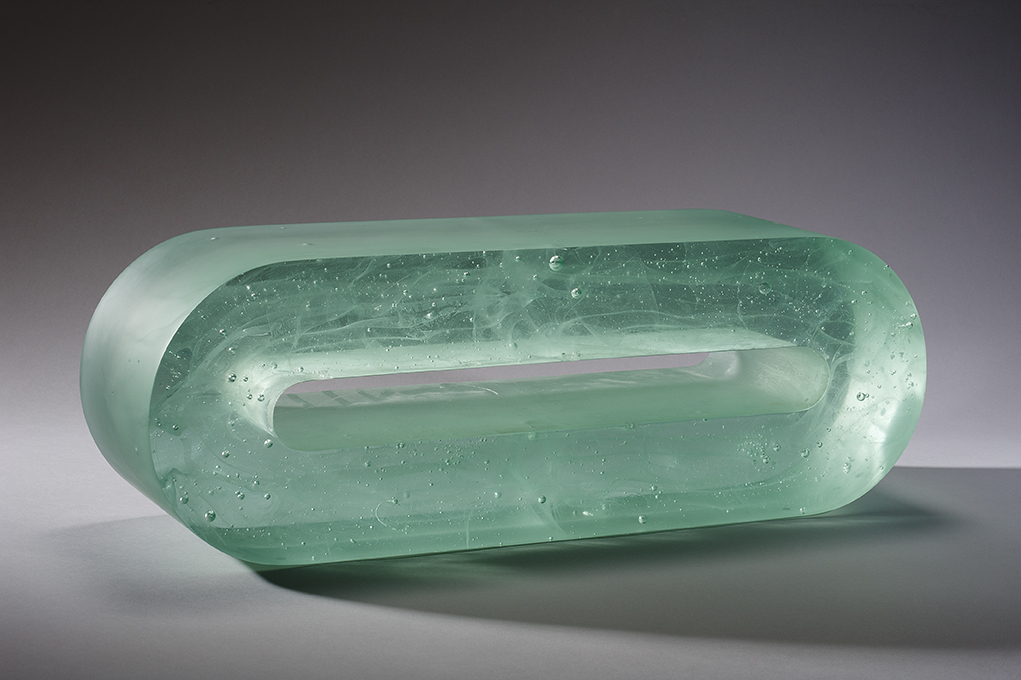 C. BONAMI PHOTO © MUSVERRE
C. BONAMI PHOTO © MUSVERRE
Architecture
An Old Craft Gets a New Tenure at MusVerre
FOR MORE THAN A CENTURY, Sars-Poteries was home to a vibrant glassblowing industry. Two glassworks—united into one company by Henri Imbert in 1802—operated at full capacity, employing some eight hundred people over the years, until they closed in 1937 due to economic problems in the aftermath of World War I and the subsequent financial crisis of 1929. It was a heavy blow to this small farming village in northern France, not far from the Belgian border.

MUSVERRE COLLECTION © ARR
Help came in 1958 in the form of Louis Mériaux, a priest who learned about the importance of the glassworks as he got to know the inhabitants of Sars-Poteries. He also discovered the original art that glassworkers had made in their spare time at the factory with the full approval of the director. Termed bousillés, the works—candy dishes, glasses, match-holders, and more—were often given as gifts for weddings and baptisms, or used at home by the makers. “These small masterworks were born from the knowledge and skills of the glassblowers,” says MusVerre director Aude Cordonnier, “and from their hearts as well.” Mériaux raised money to buy Château Imbert, the former home of the Imbert family, and turned it into the village’s cultural center. In 1967 he launched an exhibition of the bousillés with great success, and in 1969 the glass museum of Sars-Poteries was born.
Mériaux, a tireless advocate for the former glassworkers, opened a small glassblowing studio in 1976 so they could resume creating their art and pass on their knowledge to a new generation. He also organized the International Glass Symposium in 1982 and the Glass and Architecture Seminar two years later. Mériaux went on to establish the museum’s collection of contemporary glass, beginning with donated works from artists who attended the seminar. Eventually the collection grew too large for the château.
And now comes the MusVerre; its new home opened to the public on October 1. Designed by Raphaël Voinchet of W-Architectures, the museum is sited on nearly twenty-five acres and has 10,765 square feet of exhibition space, as well as visitor services, a store and bookshop, workshop, and meeting spaces. MusVerre has a low profile and large windows, allowing visitors to view the rolling fields of the Avesnois region and its renowned bocage—the extensive, wall-like hedgerow that defines the area. Voinchet chose Hainaut bluestone from Belgium for the museum’s facade, not just for its durability but also for the way the stone reacts to changing light.
The new facility will provide conservation for the extensive collection of contemporary glass and for the beloved bousillés. The adjacent glass studio provides a link between the collection and artists-in-residence, who can explore Sars-Poteries’ long history of glass art while creating their own. MusVerre anticipates 50,000 visitors this year, which will boost the economy of the region and establish it as an international arts destination. musverre.lenord.fr













